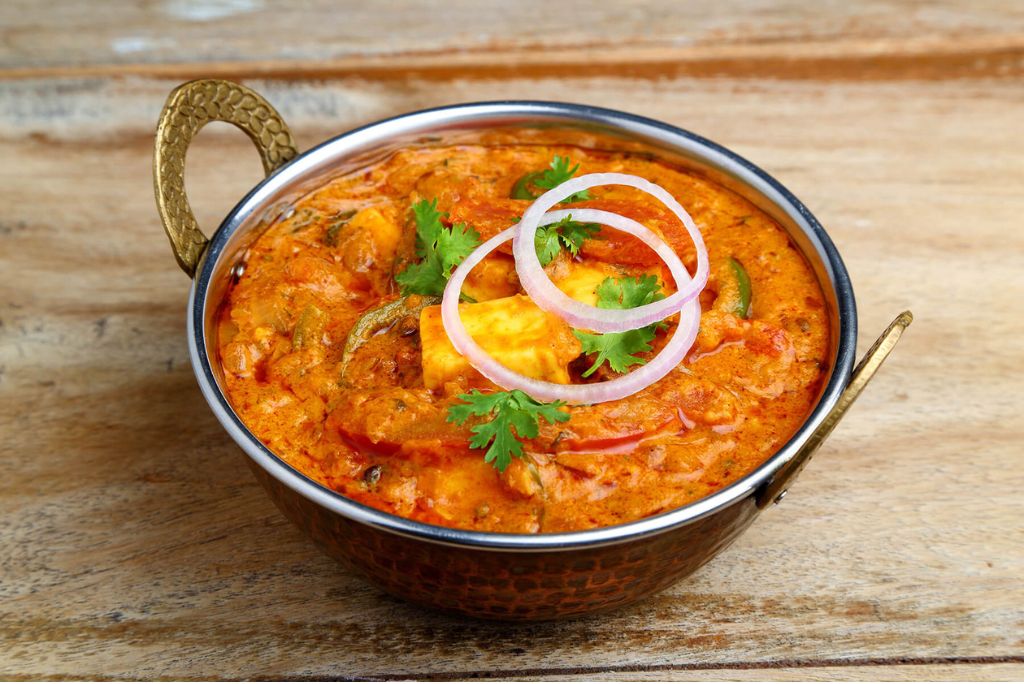Curries are among Britain’s most favoured dishes, especially in restaurants. It’s no wonder, they are rich in flavour, have so much variety, and provide a window into an amazing culture with fabulous cuisine.
We have decided it’s time to give curries the credit they deserve and include them in our blog posts. Chicken Korma is a fan-favourite worldwide. This rich, creamy, and fragrant curry elegantly combines history, culture, and culinary art into one exquisite experience.
Today, we explore its rich history and provide a lovely recipe with alternative ingredient options for you to explore so you can enjoy its rich flavours in various ways.
The Birth of Chicken Korma
The origins of Chicken Korma can be traced back to the Mughal era in India, around the 16th century. The Mughal emperors were known for their luxurious tastes and penchant for lavish feasts.
Chicken Korma was a product of this era, invented by royal chefs who sought to create a dish that was rich, flavourful, and fit for royalty. The term 'korma' comes from the Urdu word 'qorma,' which means 'braise'—a fitting description of the slow-cooking method used to prepare this dish.
How Korma Altered The Culinary Landscape
The invention of Chicken Korma was a milestone in Indian cuisine, introducing a unique way of cooking meat with yoghurt, cream, and a blend of aromatic spices.
Traditionally, Indian dishes were often spicy and robust. Korma, however, offered a milder yet equally flavourful alternative, thereby diversifying the Indian culinary landscape.
This dish's introduction altered how meat was cooked and presented, influencing several other recipes.
Commercial Success and British Popularity
Chicken Korma's appeal transcended Indian borders, making it a popular dish in Britain, particularly among diners who preferred milder curries. British Indian restaurants have embraced Chicken Korma, making it one of the most ordered dishes on their menus. Its commercial success has helped popularise Indian cuisine in Britain, making it accessible and appealing to a broader audience.
You can now buy ready-made Korma sauces at your local supermarket, which is a testament to its popularity.
Cultural Significance And Korma’s Impact on Traditional Cuisine
Interestingly,Chicken Korma did not feature prominently in traditional Indian cuisine until relatively recently. Its luxurious ingredients, such as cream and almonds, were often reserved for special occasions or royal feasts. However, as meat consumption increased, so did love for this wonderful dish and it quickly gained popularity. Since then it has made its way into everyday Indian meals, impacting how traditional Indian recipes were perceived and prepared.
Popularising Indian Food
Chicken Korma played a significant role in popularising Indian food globally. Its milder flavour profile made it an ideal introduction to Indian cuisine for Western palates, which may not be accustomed to the heat of traditional Indian spices. This dish has been pivotal in breaking down cultural barriers, allowing more people to appreciate the rich diversity of Indian cuisine and bringing people together.
_______________________________________________________________________________________ Must read: The Origin Of Chicken Jalfrezi: A Taste Of History ______________________________________________________________________________________The Recipe: How to Make Chicken Korma
Creating a perfect Chicken Korma involves a delicate balance of spices, creamy textures, and slow-cooking techniques. Below is an easy recipe to follow and we offer suggestions for possible alternatives, so you can experiment and enjoy this wonderful dish in all its forms.
Ingredients
Instructions
- Marinate the Chicken: In a large bowl, combine the Chicken pieces, yoghurt, garam masala, ground coriander, turmeric, cumin, and salt. Mix well and let it marinate for at least an hour— leave it overnight if possible as it will allow the flavours to be absorbed more deeply.
- Prepare the Base: Heat the ghee or vegetable oil in a large pan over medium heat. Add the sliced onions and cook until golden brown. Add the garlic and ginger, cooking for another 2-3 minutes until fragrant.
- Cook the Chicken: Add the marinated chicken to the pan until the Chicken pieces are browned on all sides.
- Make the Sauce: Stir in the ground almonds and add enough water to create a thick sauce. Reduce the heat to low and let it simmer for about 20 minutes, or until the chicken is cooked throughout.
- Add Cream: Stir in the double cream and let it simmer for another 5 minutes. Taste and adjust the seasoning as needed.
- Garnish and Serve: Garnish with fresh coriander leaves and serve hot with basmati rice or naan bread.
Variations
Sweeter Version: Add a handful of raisins or a tablespoon of honey to the sauce for a sweeter touch.
Spicier Version: Increase the amount of chilli powder or add a few chopped green chillies to elevate the heat.
Meat Alternatives: Substitute chicken with lamb, beef, or even paneer (Indian cottage cheese), and add some mixed vegetables like potatoes, carrots, and peas.
Final Thoughts
From its royal Mughal origins to its status as a beloved dish in British Indian restaurants, Chicken Korma exemplifies the beauty of culinary fusion and innovation. It is more than just a dish; it’s a culinary journey that takes you through centuries of history and cultural evolution. There is no denying that the chicken korma is here to stay.
Whether you prefer it mild, sweet, or spicy, this versatile dish can be adapted to suit your preferences without compromising its quality or cultural significance.
Ready to try it yourself? Follow Halal Origin’s recipe and create a luxurious Chicken Korma that pays homage to its rich history and culture.
The magic ingredient in any recipe is the love you put into it. Halal Origin’s meat is sourced exclusively from local organic farms, where the welfare of the animals is paramount. This translates into perfectly tasting and healthy food for you and your family.
Enjoy!

